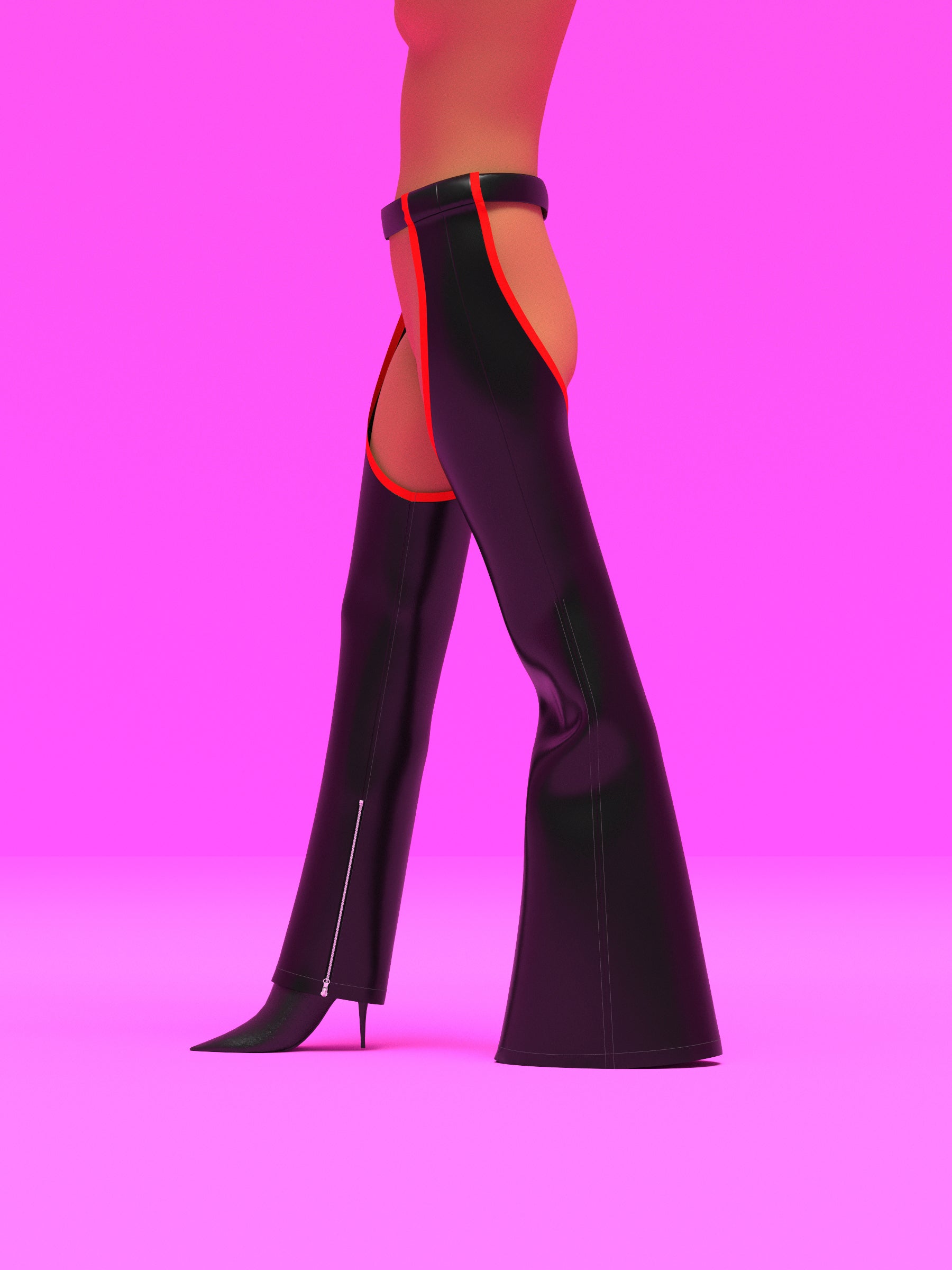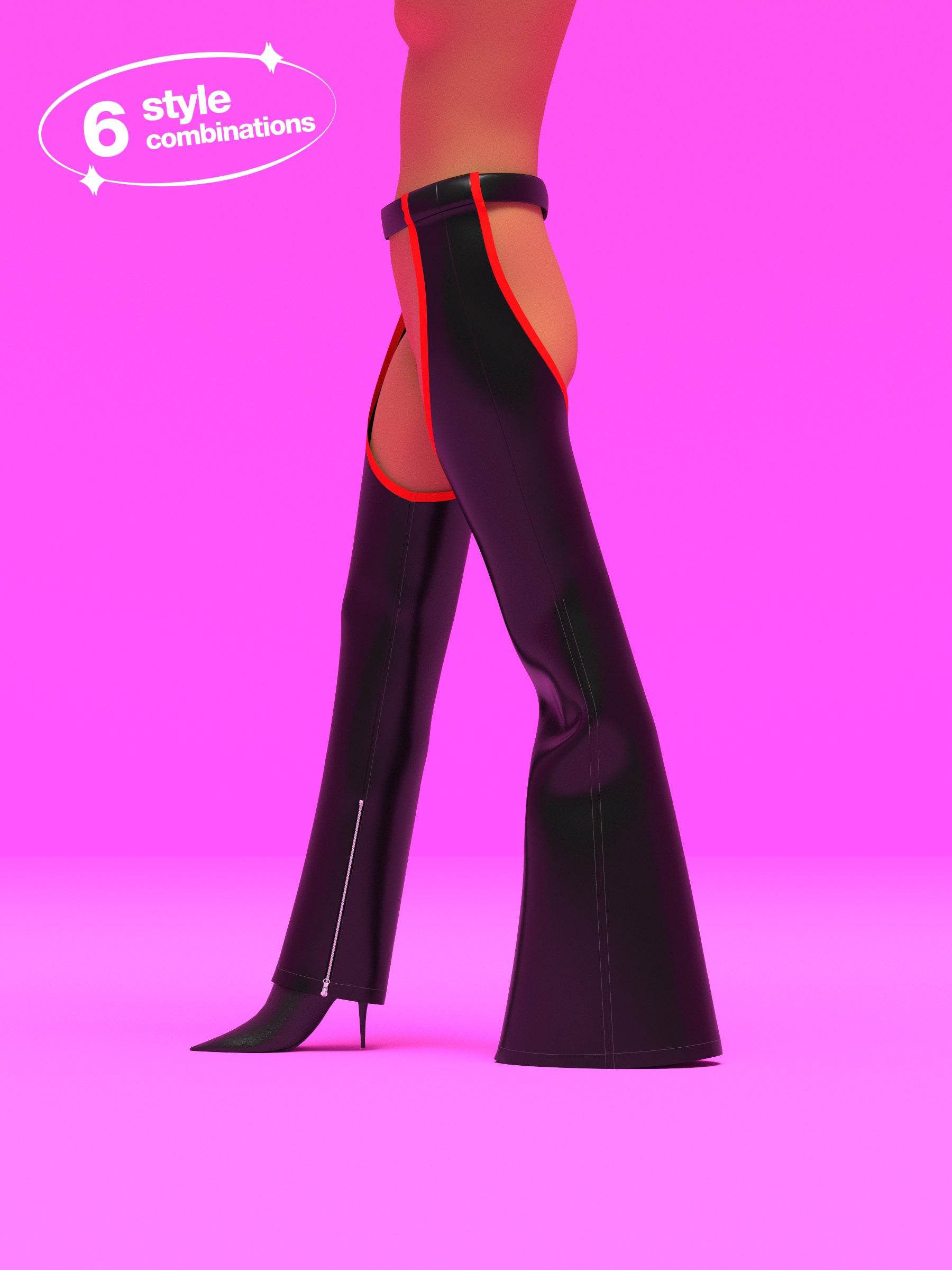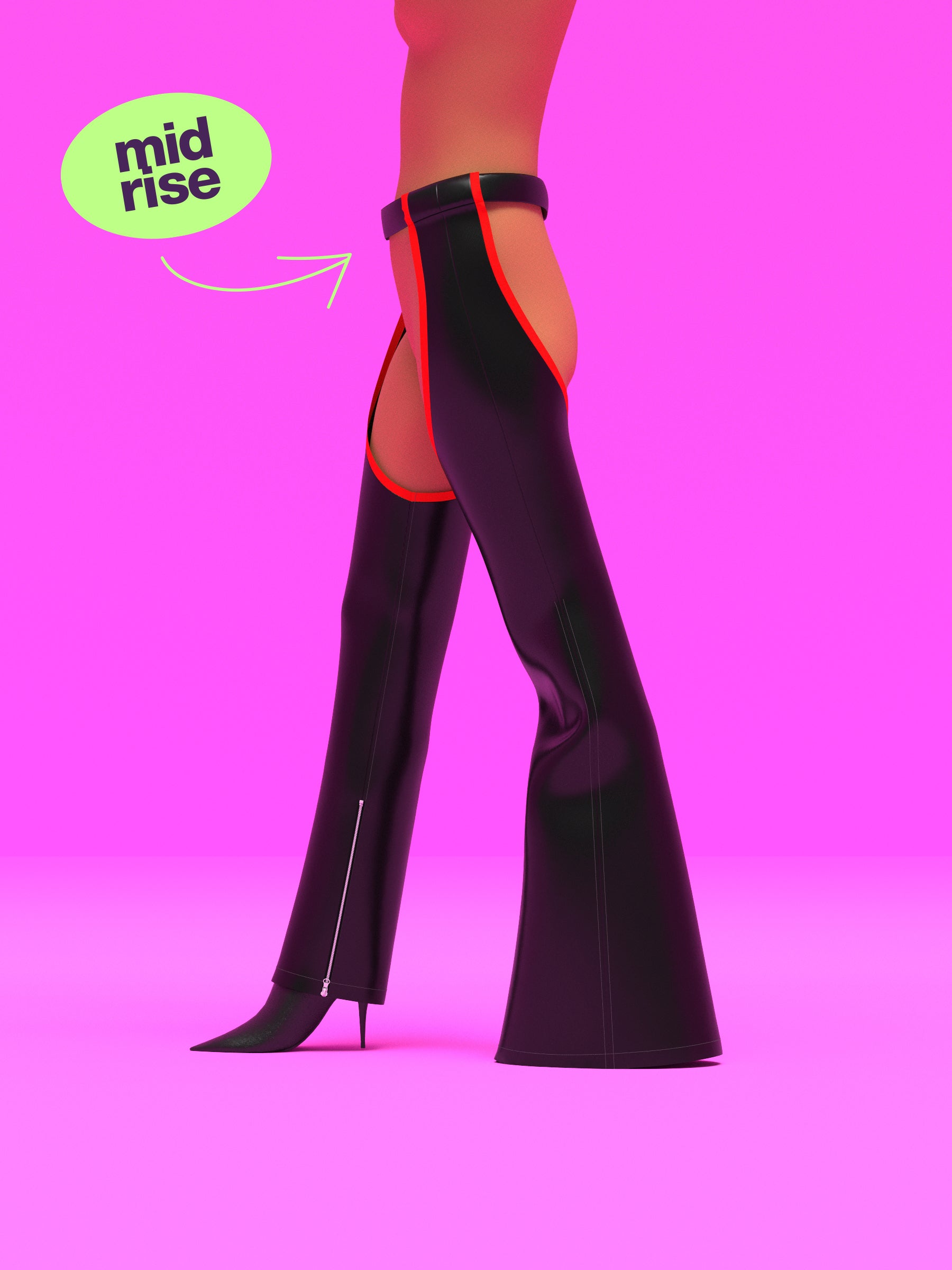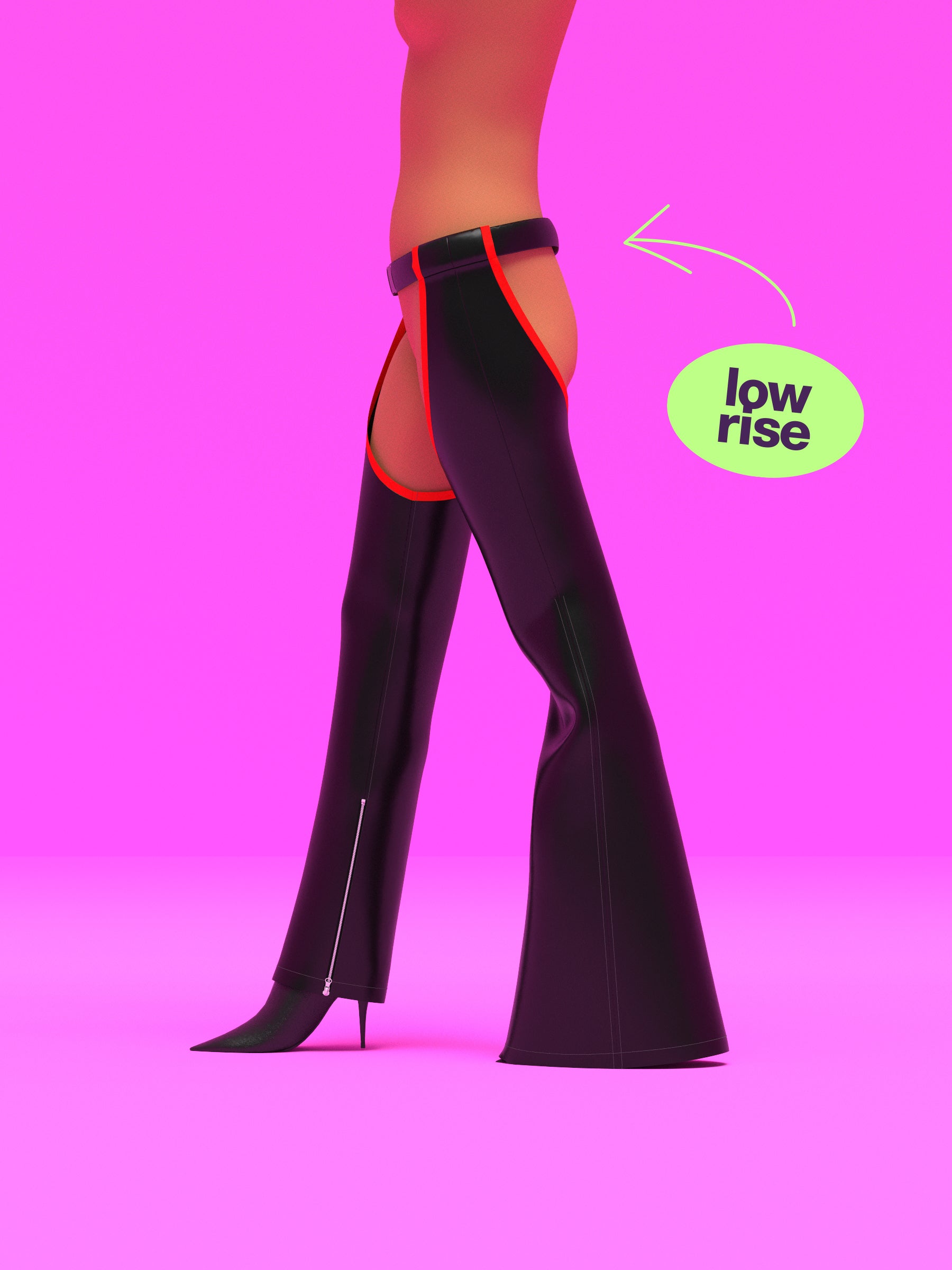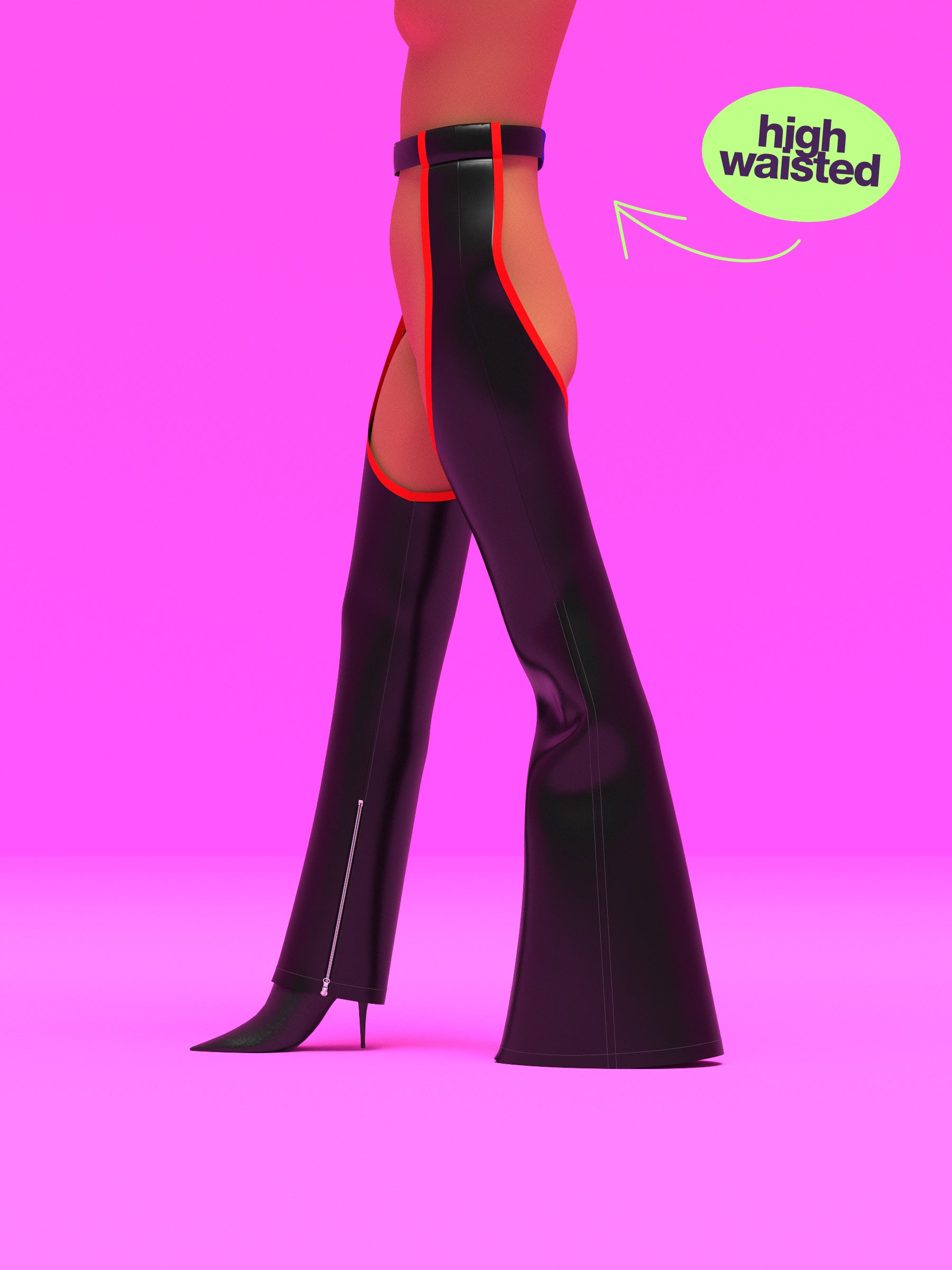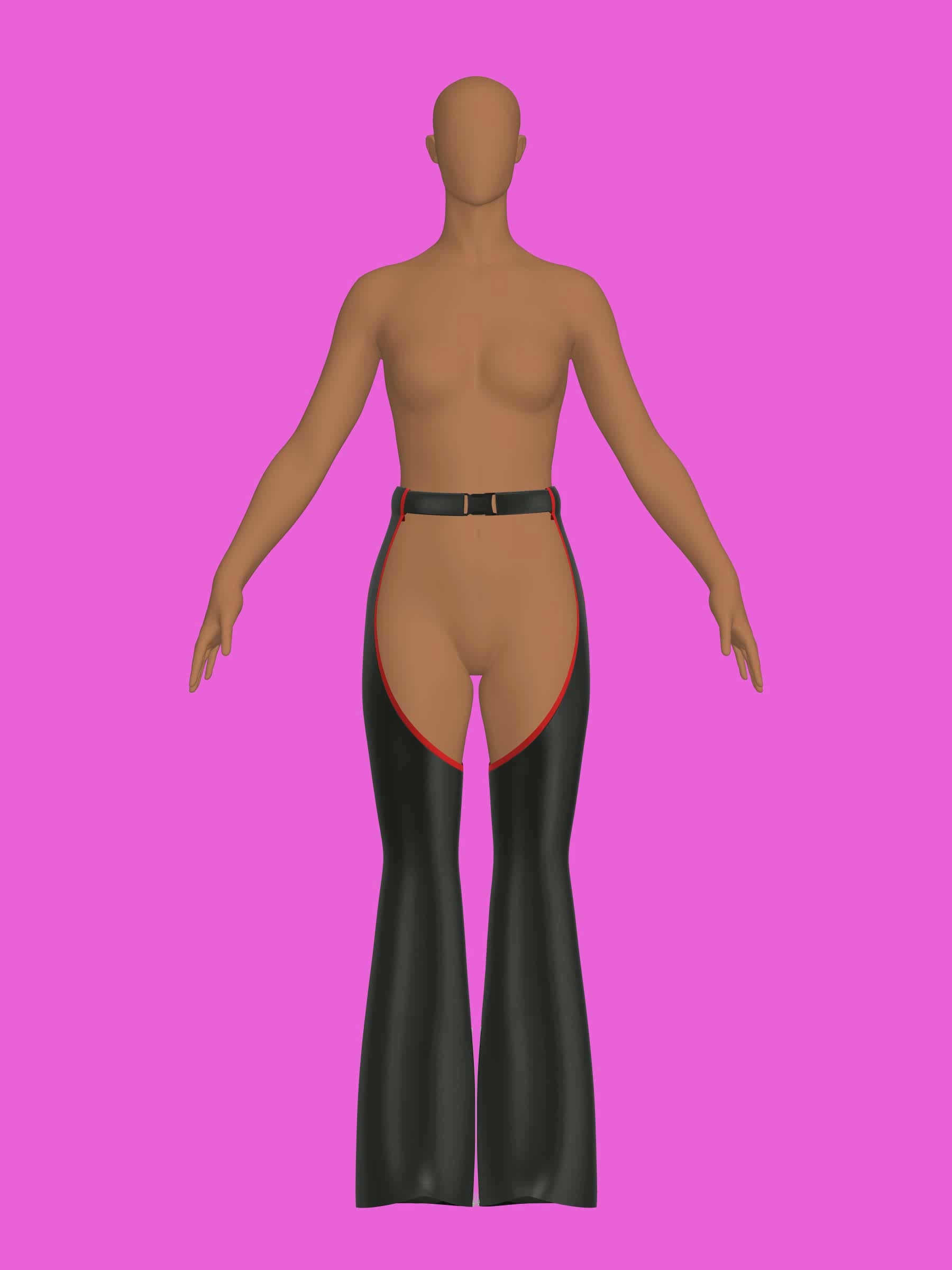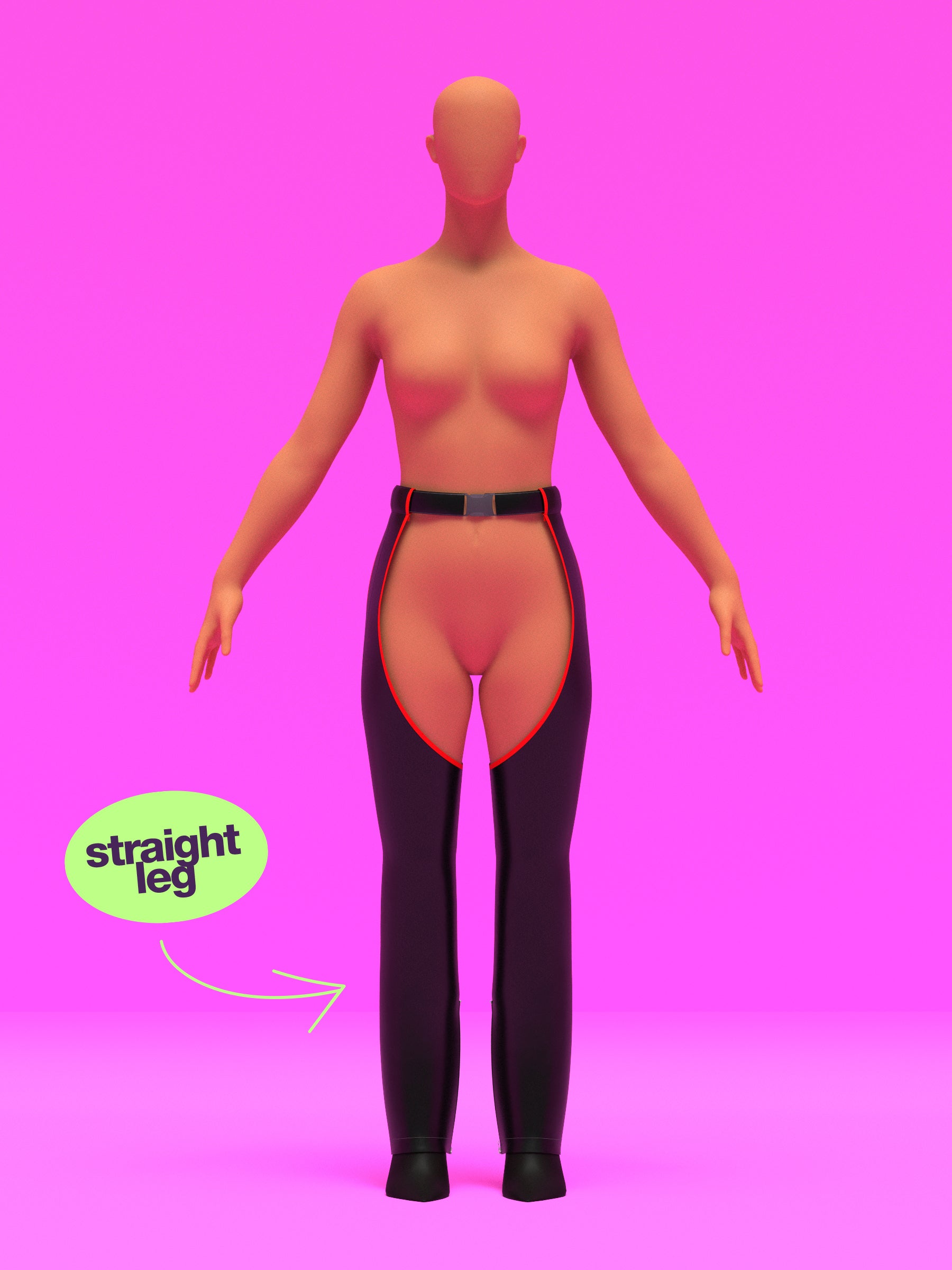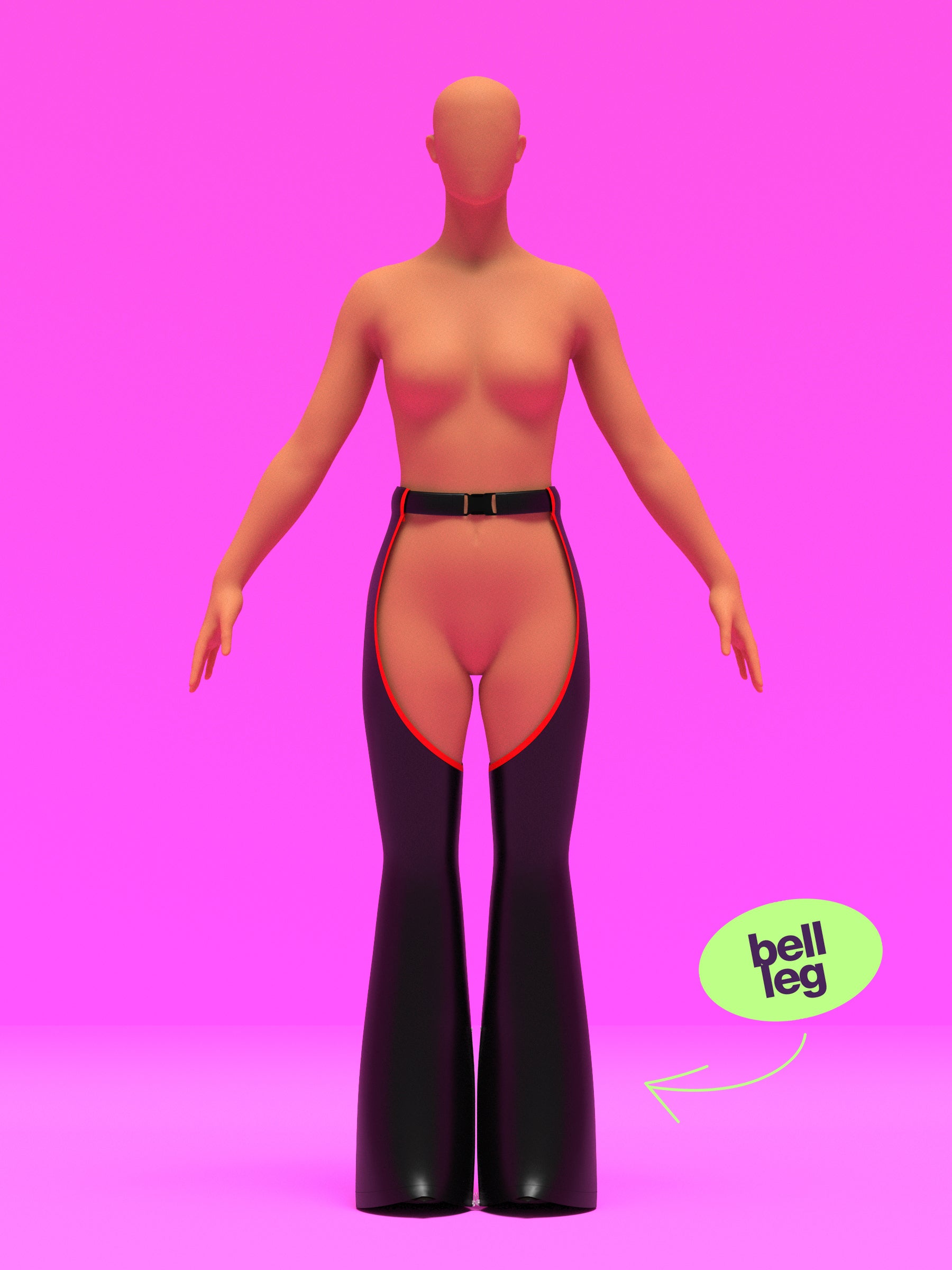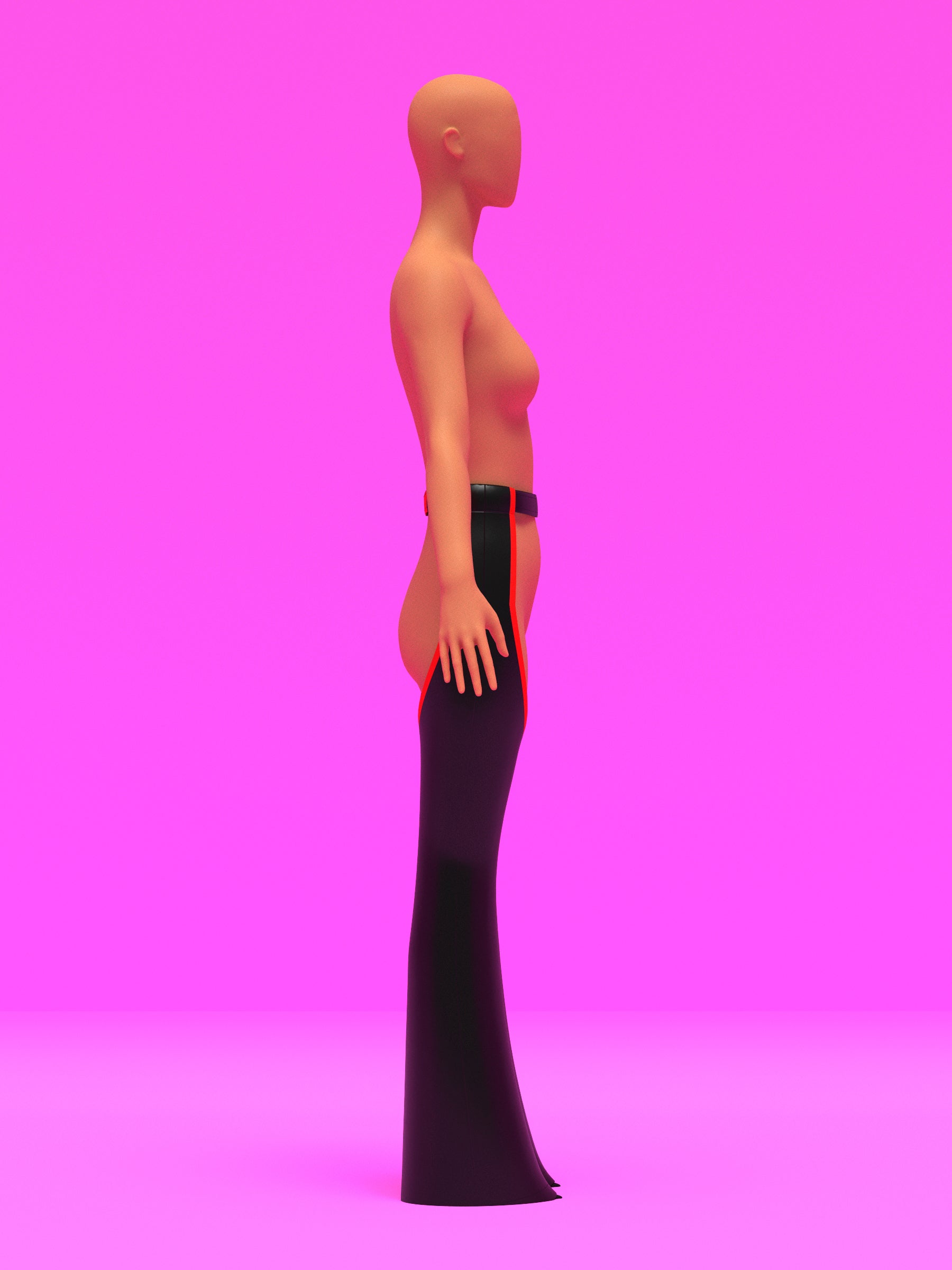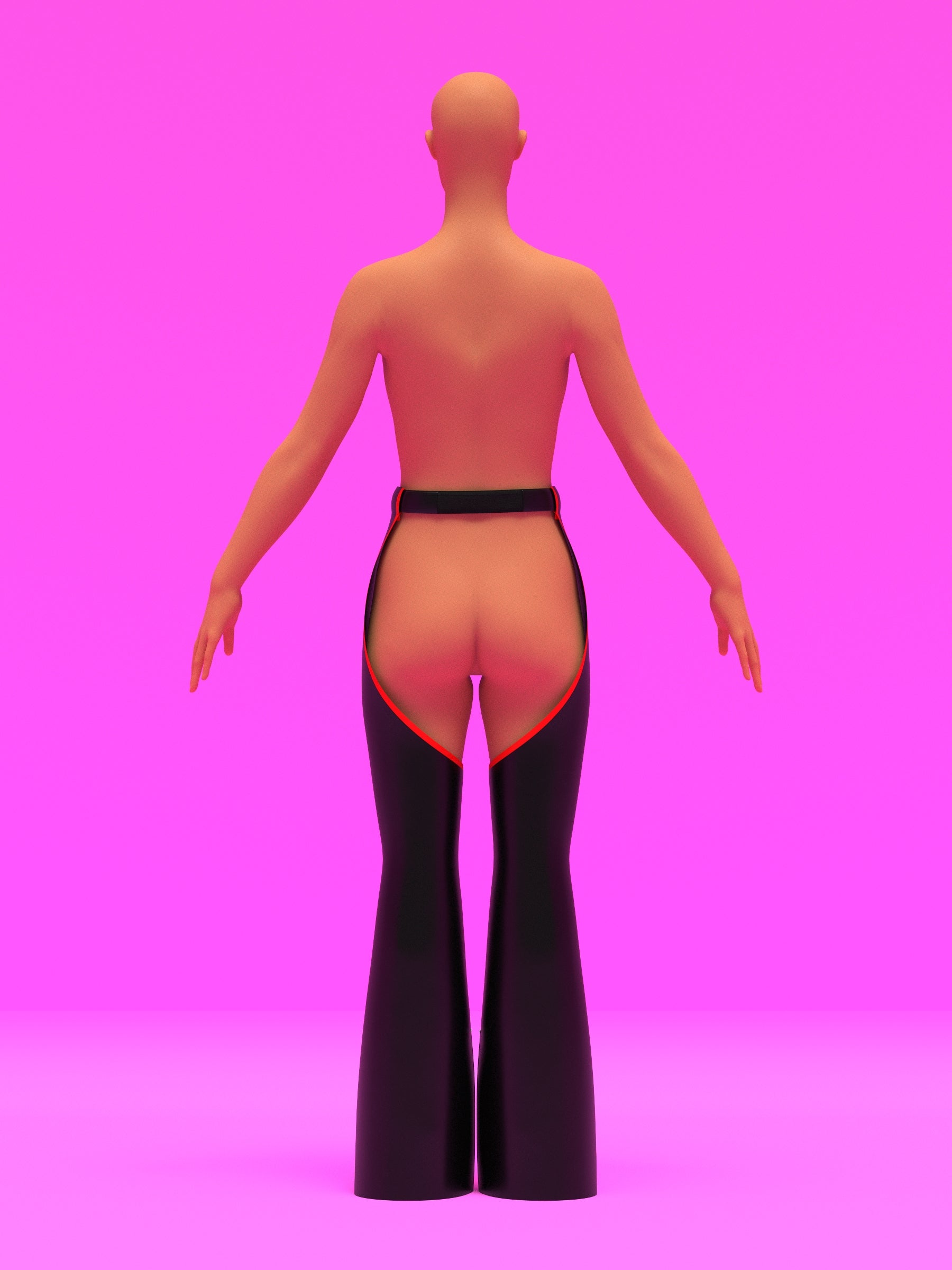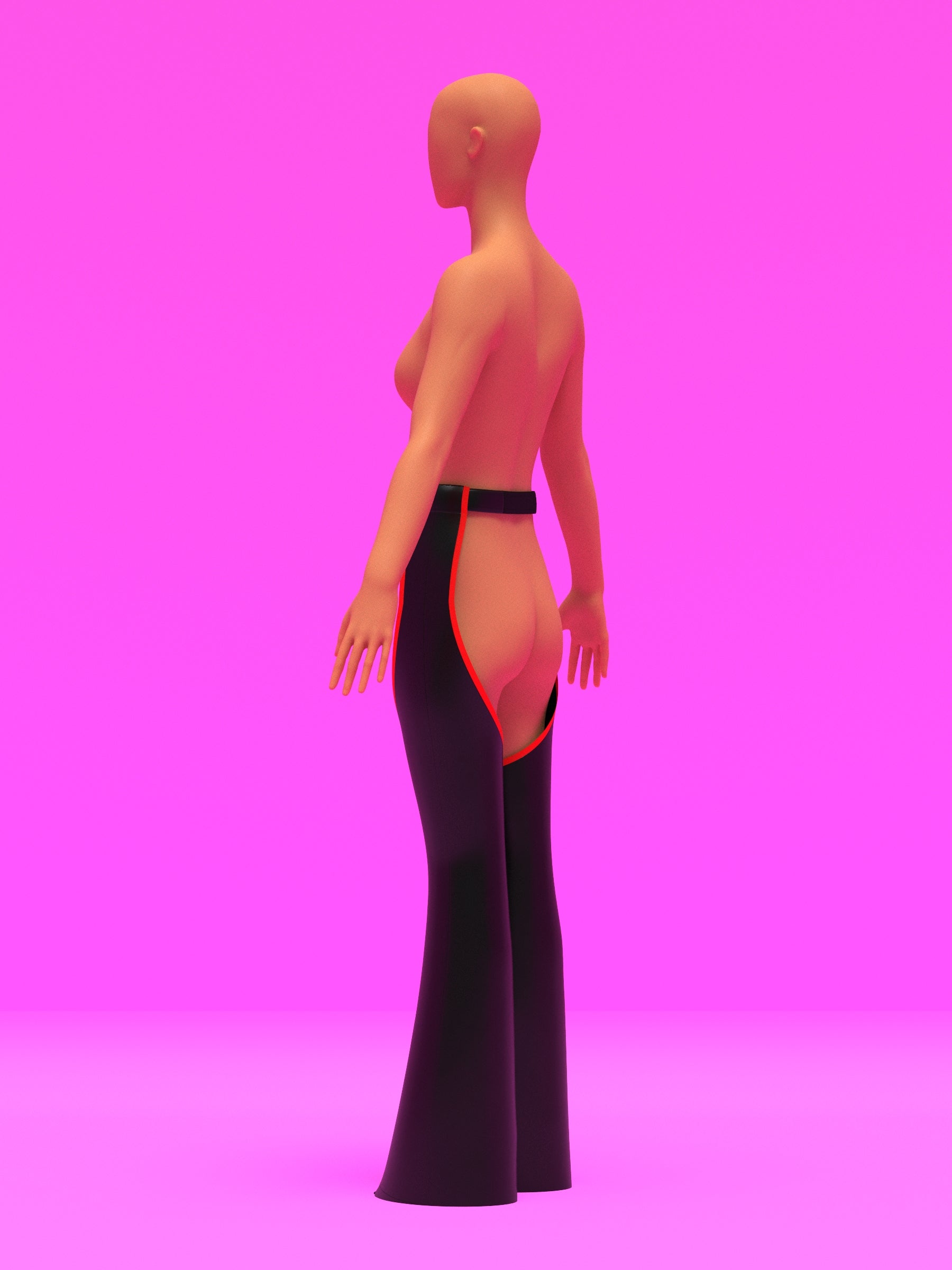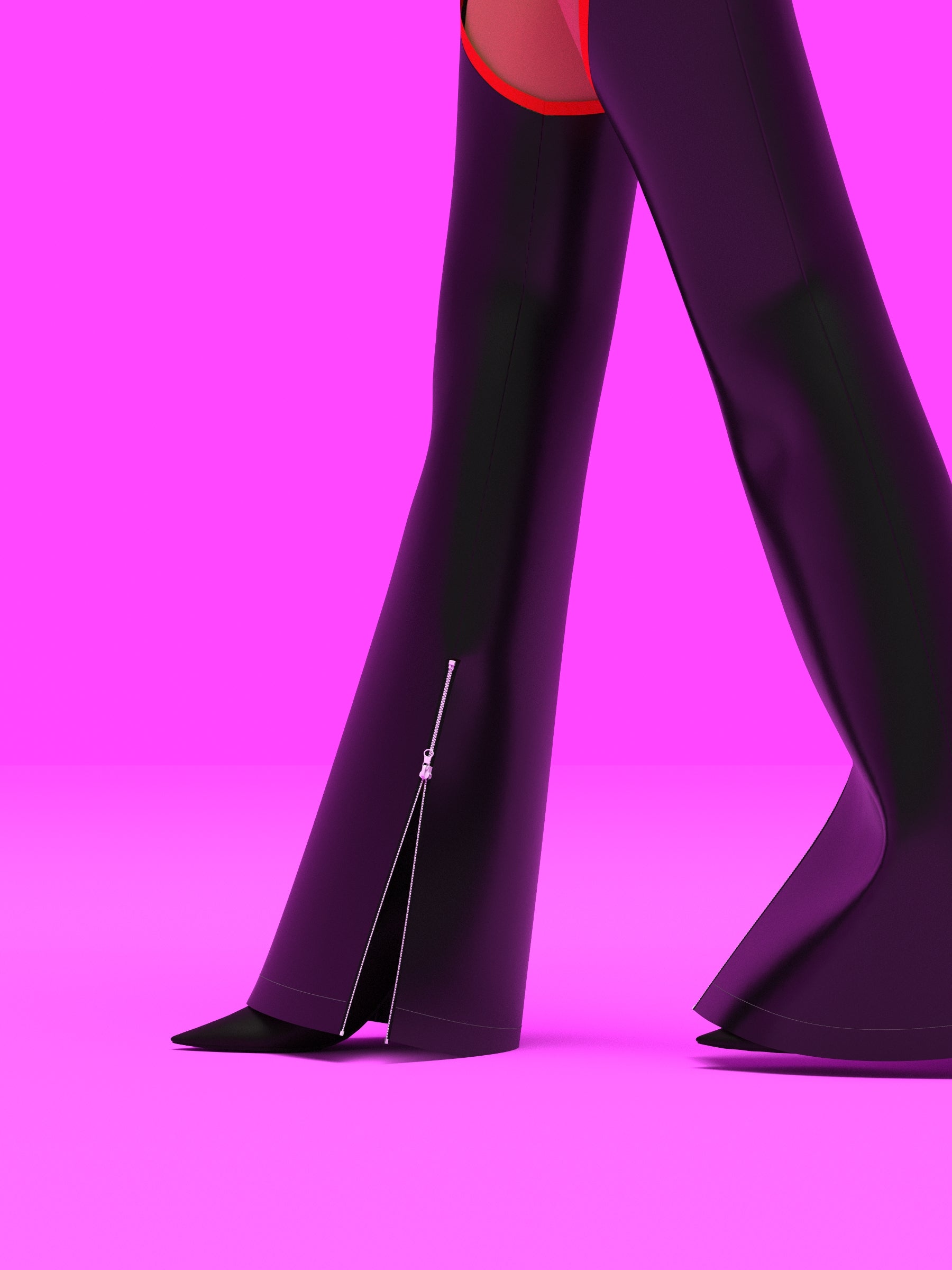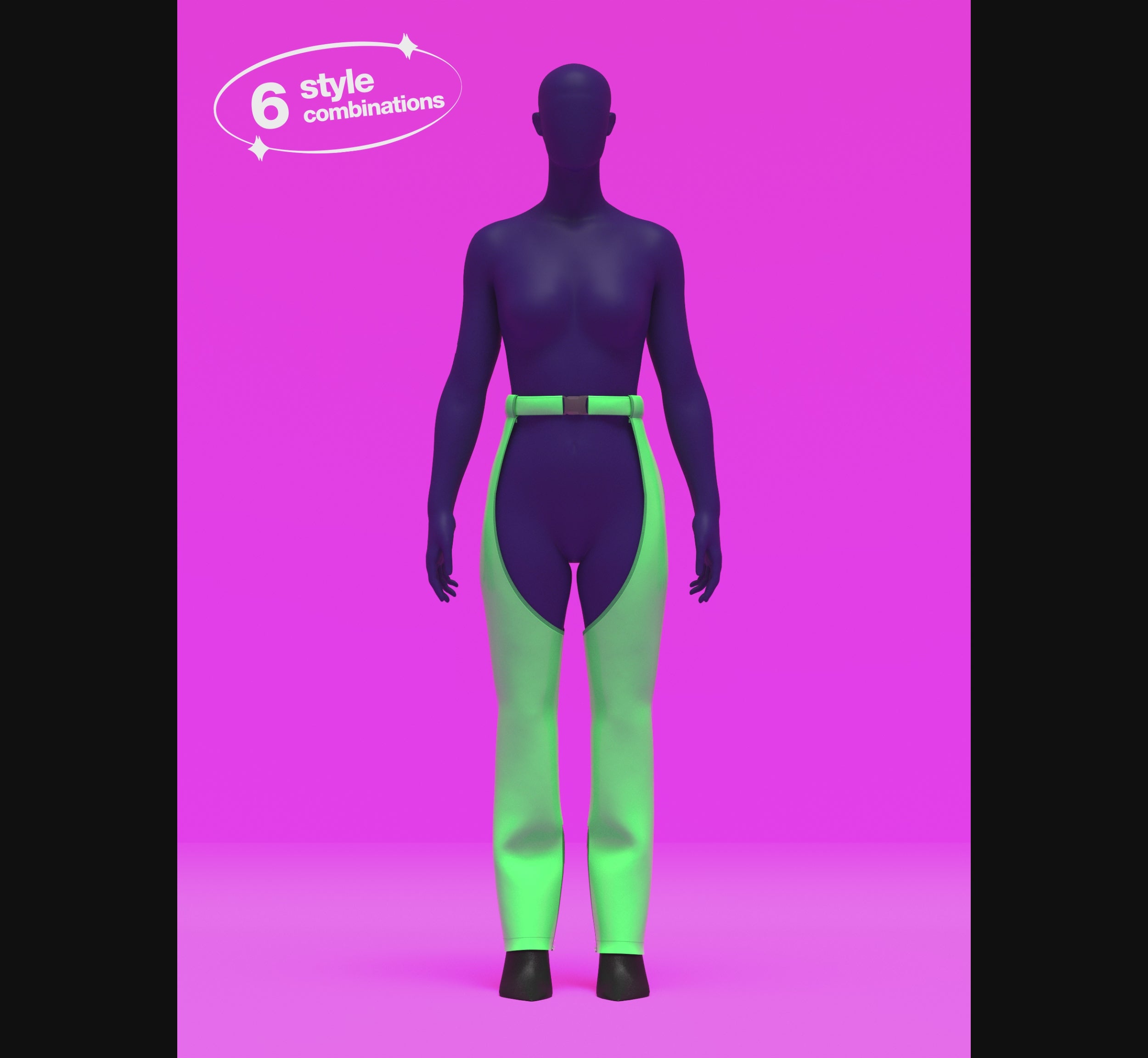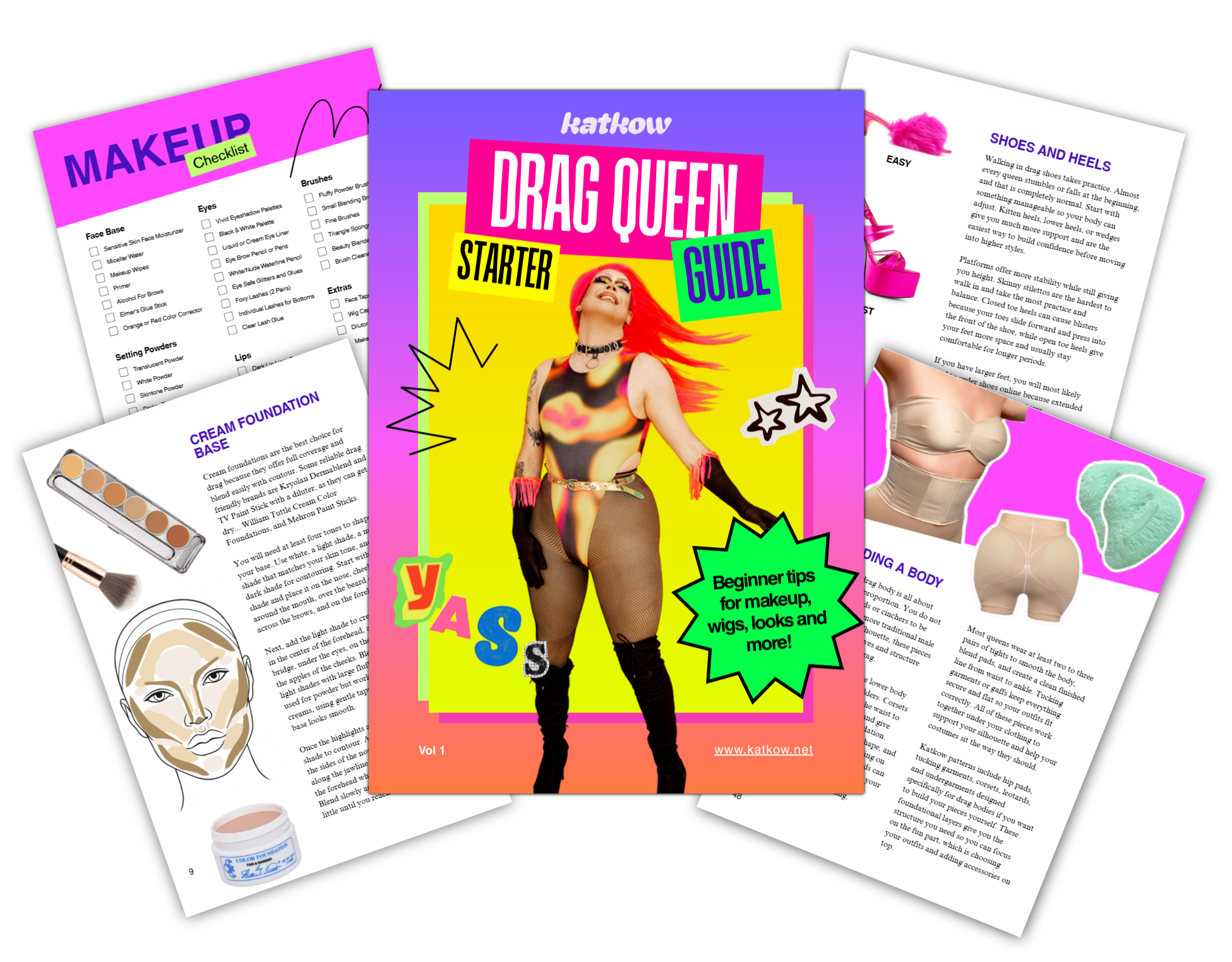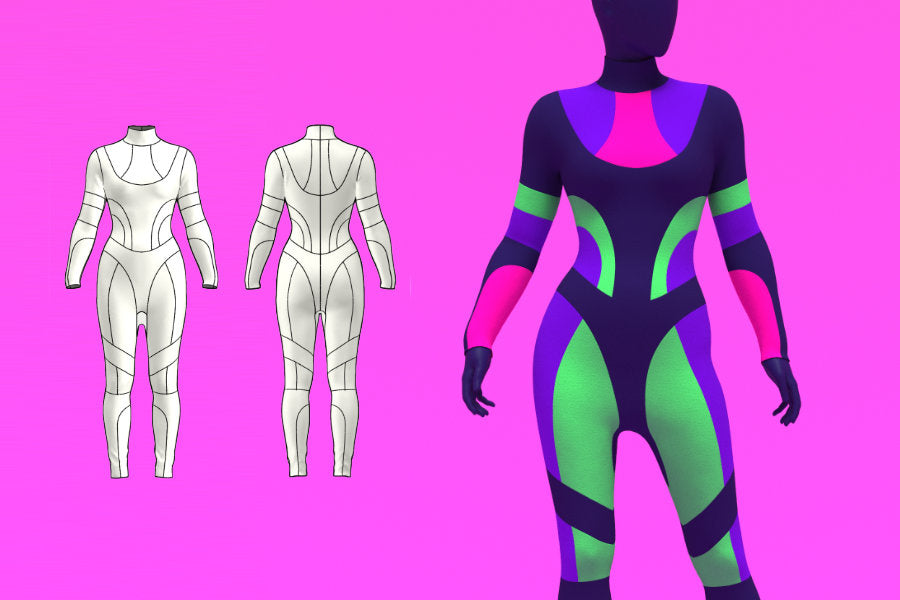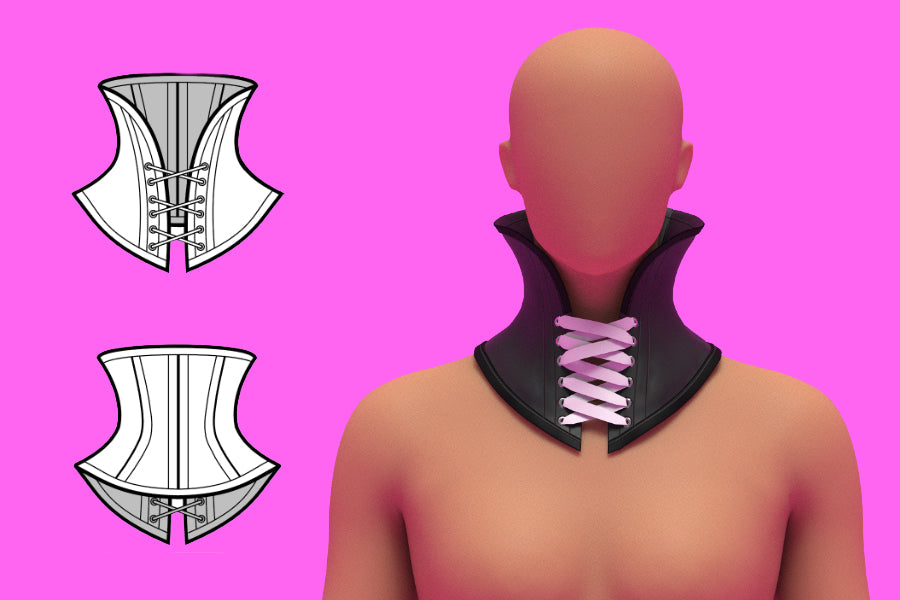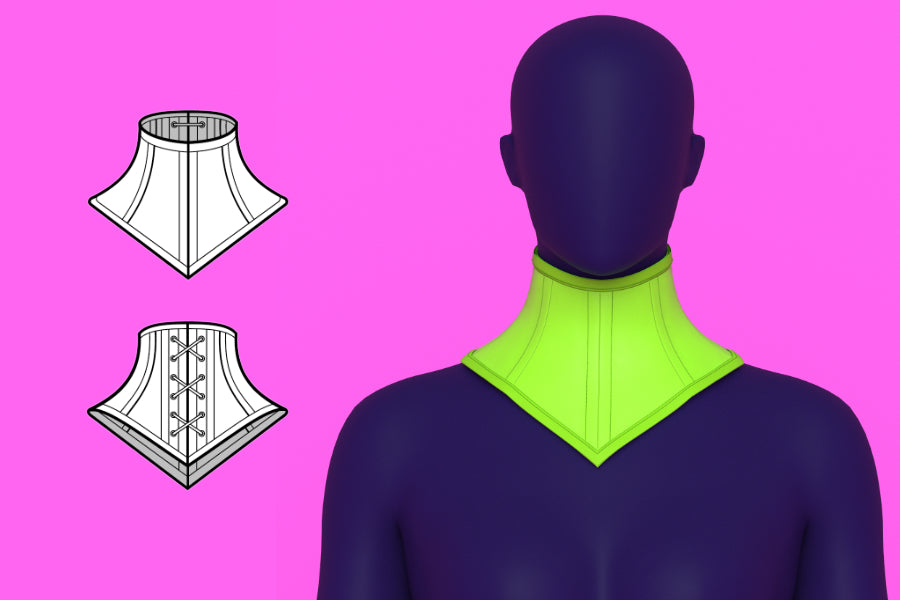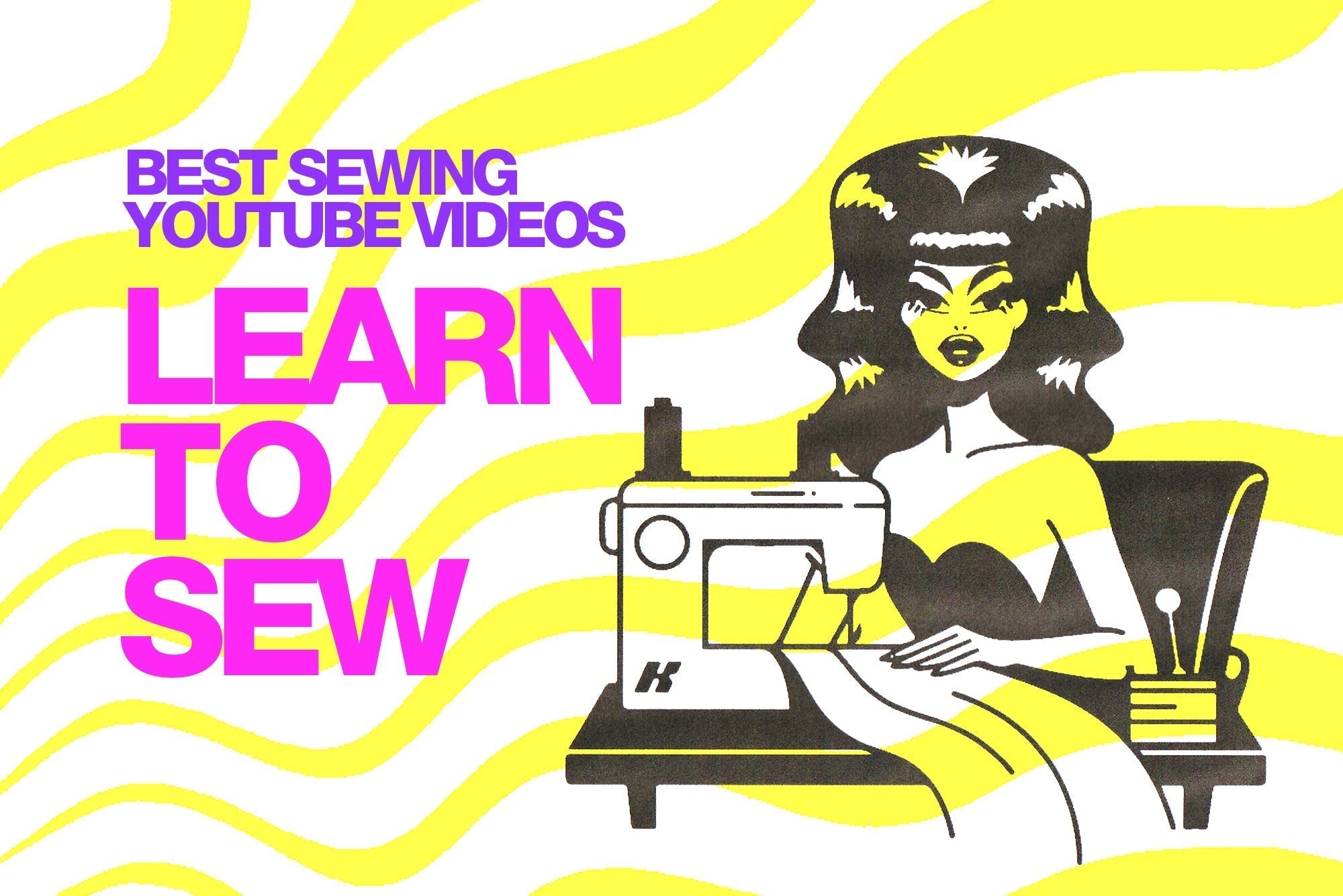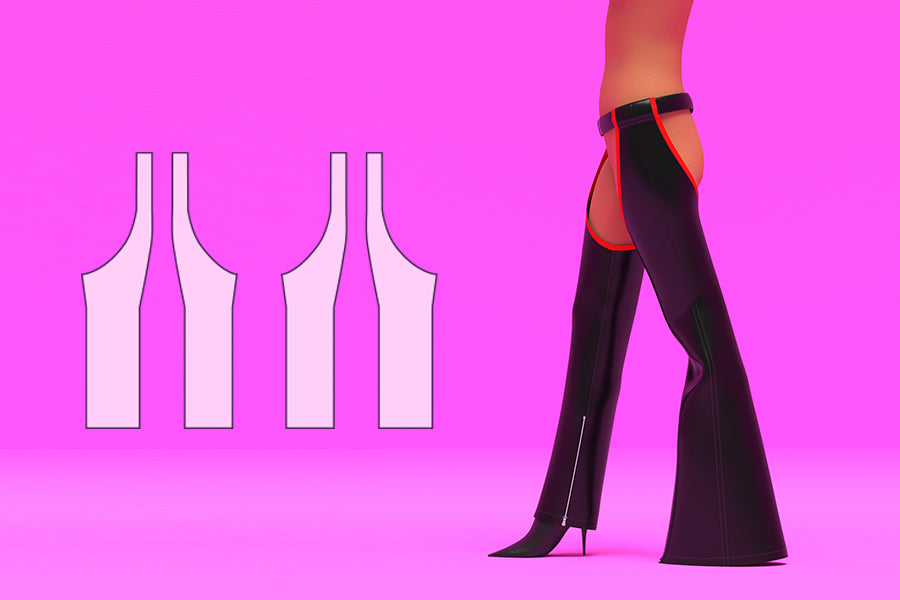
Cómo coser polainas: tutorial de costura paso a paso
Saltar a instrucciones
Descripción general
¿Listo para lucirte? Este tutorial de costura te muestra cómo confeccionar tus propios chaps con nuestro Patrón de Costura para Chaps, diseñado especialmente para drag queens, artistas y cualquier persona que disfrute de un toque de estilo atrevido. Con 6 combinaciones únicas para elegir, incluyendo perneras rectas o acampanadas, tres opciones de cinturón y múltiples variaciones de largo, este tutorial cubre todo lo que necesitas saber para lograr el ajuste y el acabado perfectos.
Convirtamos la tela en fantasía: aprovecha tu poder y deja que tus chicos se roben el protagonismo.
Yardas de tela
Estos polainas están diseñados para telas de cuero sintético o vinilo, que suelen venir en rollos de 137 a 147 cm de ancho. A continuación, encontrará tablas de metraje para nuestras tallas Drag Queen y tallas estándar para mujer, para ayudarle a determinar la cantidad de tela que necesitará.
Tallas de Drag Queens
| Tamaño | Pierna recta (yds) | Pierna de campana (yds) | Cinturones (yds) | Cubierta elástica para cinturón (yds) |
|---|---|---|---|---|
| XS | 1.25 | 1.5 | 0.5 | 0,25 |
| S | 1.5 | 1,75 | 0.5 | 0,25 |
| METRO | 1,75 | 2 | 0.5 | 0,25 |
| Yo | 1,75 | 2 | 0.5 | 0,25 |
| SG | 2 | 2 | 0,75 | 0,25 |
| 2X | 2 | 2 | 0,75 | 0,25 |
| 3X | 2 | 2.25 | 1 | 0,25 |
| 4X | 2 | 2.25 | 1 | 0,25 |
Tallas de mujer
| Tamaño | Pierna recta (yds) | Pierna de campana (yds) | Cinturones (yds) | Cubierta elástica para cinturón (yds) |
|---|---|---|---|---|
| 0–2 | 1.25 | 1.5 | 0.5 | 0,25 |
| 4–6 | 1.25 | 1.5 | 0.5 | 0,25 |
| 8–10 | 1.25 | 1.5 | 0.5 | 0,25 |
| 12–14 | 1.25 | 1.5 | 0.5 | 0,25 |
| 16–18 | 1.25 | 1.5 | 0.5 | 0,25 |
Detalles de tallas
Los Chaps están disponibles en nuestros exclusivos tamaños drag queen XS a 4X y tamaños estándar de mujer 2 a 18, lo que garantiza un ajuste sorprendente para varios tipos de cuerpo.
Tallas de Drag Queen
| Tallas | XS | S | METRO | Yo | SG | 2X | 3X | 4X | |||
|---|---|---|---|---|---|---|---|---|---|---|---|
| Pulgadas | |||||||||||
| Busto | 35”-37” | 38”-40” | 40”-42” | 44”-46” | 47”-49” | 50”-52” | 53”-55” | 56”-58” | |||
| Cintura | 26”-28” | 29”-31” | 32”-34” | 35”-37” | 38”-40” | 41”-43” | 44”-46” | 47”-49” | |||
| Caderas | 37”-39” | 40”-42” | 43”-45” | 46”-48” | 49”-51” | 52”-54” | 54”-56” | 58”-60” | |||
| Altura | 70" | 70" | 70" | 70" | 70" | 70" | 70" | 70" | |||
| Centímetros | |||||||||||
| Busto | 89-94 | 96-102 | 102-107 | 112-117 | 119-124 | 127-132 | 135-140 | 142-147 | |||
| Cintura | 66-71 | 74-79 | 81-86 | 89-94 | 96-102 | 104-109 | 112-117 | 119-124 | |||
| Caderas | 94-99 | 102-107 | 109-114 | 117-122 | 124-130 | 132-137 | 137-142 | 147-152 | |||
| Altura | 178 | 178 | 178 | 178 | 178 | 178 | 178 | 178 | |||
Nuestras exclusivas tallas de drag se basan en las tallas estándar de EE. UU. para hombre y mujer, diseñadas para hombres con relleno y una altura promedio de 180 cm. Presentan torsos más largos, hombros, brazos y piernas más anchos, y una entrepierna más corta en comparación con las tallas estándar de mujer, lo que las hace aptas para cualquier persona que cumpla con las medidas proporcionadas.
Tallas estándar de mujer
| Tallas | 0-2 | 4-6 | 8-10 | 12-14 | 16-18 | ||||
|---|---|---|---|---|---|---|---|---|---|
| Pulgadas | |||||||||
| Busto | 32"-33" | 34"-35" | 36"-37" | 39"-40" | 42"-44" | ||||
| Cintura | 24"-25" | 26"-27" | 28"-29" | 31"-32,5" | 34,5"-37" | ||||
| Caderas | 33"-35" | 37"-38" | 39"-40" | 42"-43" | 45"-47" | ||||
| Altura | 65" | 65" | 65" | 65" | 65" | Centímetros | |||
| Busto | 83.8 | 86.4-88.9 | 91,4-94,0 | 99,1-101,6 | 106,7-111,8 | ||||
| Cintura | 63.5 | 66.0-68.6 | 71.1-73.7 | 78,7-82,6 | 87,6-94,0 | ||||
| Caderas | 88.9 | 94.0-96.5 | 99,1-101,6 | 106.7-109.2 | 114.3-119.4 | ||||
| Altura | 165 | 165 | 165 | 165 | 165 | ||||
Telas y artículos de mercería
Diseñado para telas no elásticas como cuero sintético, vinilo o mezclilla.
Nociones:- Una hebilla de 1,5"
- Cinta al bies o ribete de 0,5" doblada dos veces
- Dos cremalleras de 12" a 14"
Instrucciones de costura
Paper Pattern: Folders
READ FIRST: The paper pattern comes in separate parts and folders that need to be taped together before cutting your fabric.
📁 1. Belt-Patterns
In this folder, you’ll find belt patterns for the high-waisted, mid-rise, and low-rise options.
You can choose to print these and make your own belt, or use a belt you already have.
📁 2. Full-Straight-Leg-Pattern
This folder contains all the pieces needed to complete the straight leg chaps. The pattern pieces are broken into sections: belt loops, above the knee, and below the knee. These need to be taped together to form one full leg pattern for cutting your fabric.
Pick your waist height (high, mid, or low rise), then tape the belt loop pieces to the matching rise guides on the pattern.
📁 3. Bell-Leg-Add-On
The bell bottom pieces are add-ons and can be printed separately. These are used to replace the straight leg below-the-knee pieces if you’re making the bell bottom version.
Once everything is taped together for your chosen style, you’re ready to cut your fabric!

Color Guide

Leg Assembly
Once you've chosen your chap style and assembled the printed pattern pieces, you're ready to cut your fabric.
You should cut 2 front leg pieces and 2 back leg pieces out of a faux leather or vinyl fabric.
These instructions will be shown using the straight leg pattern, but the same steps apply when sewing the bell leg style.

Sewing One Leg
Step 1: Gather a front leg piece and one back leg piece for one side.
Step 2: Stack them right sides of the fabrics facing each together, aligining at the inner leg seam.
Step 3: Sew the inner leg seam from the top down stopping at the zipper notch. Use a straight stitch and a half inch (0.5") seam allowance.
Note: If wish to not add an inner zipper, sew all the way down the seam.

Install the Zipper
Step 4: At the zipper notch, make a small snip to open up the seam.
Step 5: Pin and sew the zipper below the notch, leaving 1–2 inches free at the bottom for hemming later. Do not attach the zipper all the way to the hem.
Step 6: Flip the leg right side up and topstitch the seam toward the back leg. Then topstitch both sides of the zipper fabric to hold it in place.

Assemble the Outer Leg
Step 7: With the zipper installed, turn the panel wrong side out and sew the outer leg seam, right sides facing.
Step 8: Flip the leg panel right side out. Topstitch the outer seam as far as possible from both the top and bottom. Repeat steps 1–8 for the opposite leg.
Step 9: Hem both legs: Straight leg chaps stop at the ankle. Bell-bottom chaps can go to the floor for heels.
👠 Pro tip: Test your preferred hem length before installing the zipper so everything aligns cleanly.

Make the Belt (High-Waisted Version)
This version includes an elastic back for added comfort and movement.
Step 10: You’ll need: 2 faux leather belt strips, 1 elastic cover piece (non-stretch cotton/polyester), and 1 piece of elastic.
Step 11: Measure your elastic (should be shorter than the cover). Pin it to the wrong side of the elastic cover, stretching it as you pin. Leave a ½" seam allowance around all edges.

Step 12: Sew the elastic to the cover. Then place the cover right sides together with one leather strip and sew along one edge.
Step 13: Repeat with the second strip on the other side of the cover.
Step 14: Flip the belt right side up and topstitch both seams where the elastic meets the faux leather.

Step 15: Fold in the top and bottom edges of the belt by ½". Clip in place.
Step 16: Fold the belt vertically in half. Topstitch all layers together: Use a straight stitch on the faux leather and use a zigzag stitch over the elastic panel for stretch.
💡 If you’re using a mid-rise or low-rise belt, skip the elastic. Just fold and topstitch as shown in steps 15–16. You can also use any belt you already own.

Bais Trim
Step 17: Where the front and back legs are sewn together, finish the raw edges using ½" double-fold bias tape.
Step 18: Unfold your bias tape or trim.
Step 19: With right sides together, sew the bias tape to the raw edges all around the outer side of each leg.
Step 20: Fold the bias tape over the edge to the wrong side. Topstitch to secure.

Step 21: Once the bias tape is in place, you can close the belt loops.
Step 22: Fold the top edges of the leg panels along the fold lines. This should create a wide enough loop for the belt. Fold in the raw edges and topstitch to secure the loop.
Step 23: Slide the belt through each loop.

Buckle
Step 24: Try on your chaps and adjust the belt fit. Trim off any extra if needed before attaching the buckle. You have two buckle options: A: Sew the end of the belt around the buckle to secure it completely. B: Fold in the end and stitch it down, leaving excess belt for adjustment.

Videotutorial relacionado
Mire nuestro video tutorial relacionado: sigue un proceso de construcción similar y es una excelente referencia.
